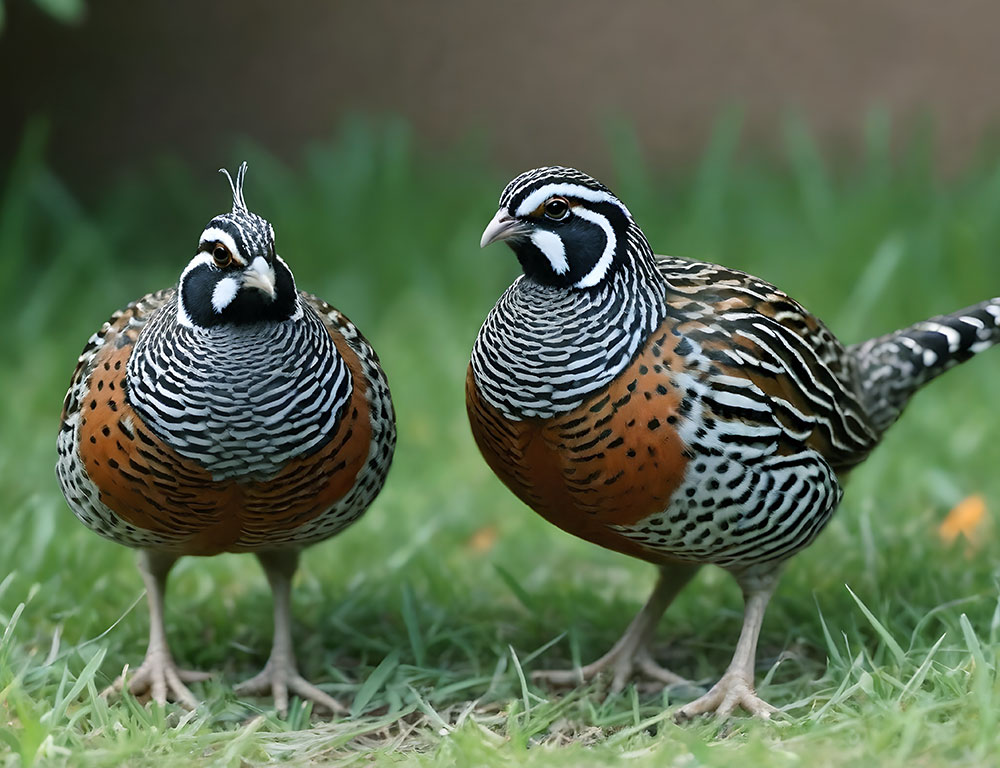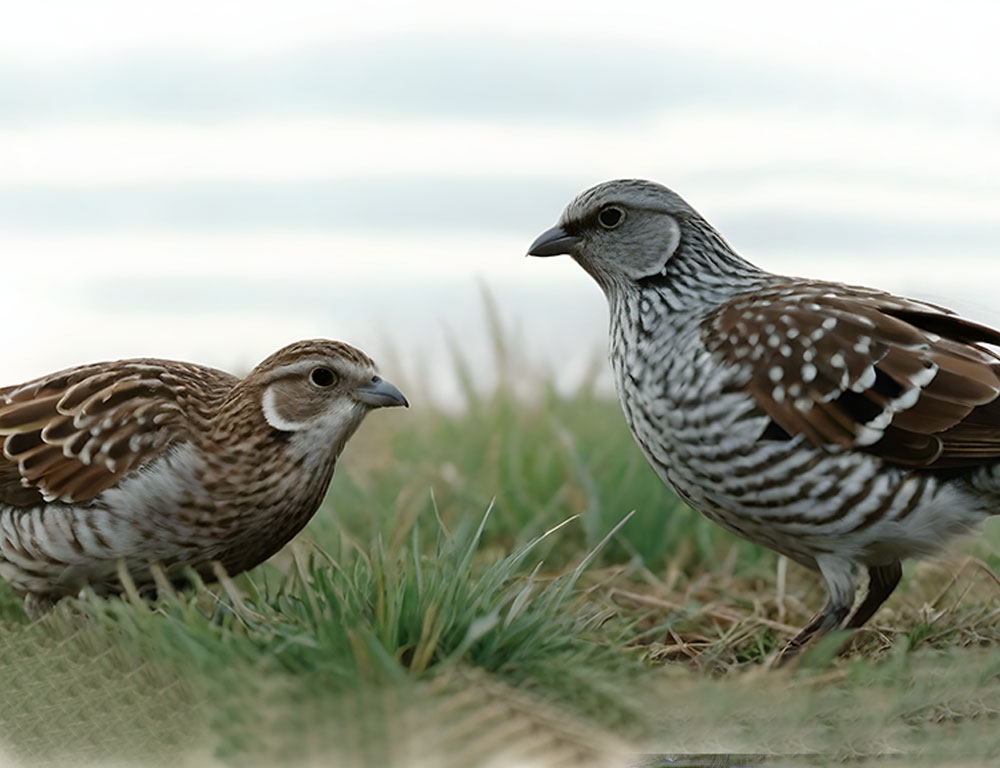Nestled within the mist-shrouded peaks of the Himalayas resides one of nature’s most elusive treasures: the Himalayan Quail (Ophrysia superciliosa).
With a history steeped in mystery and rarity, this small ground-dwelling bird has intrigued scientists and bird enthusiasts since its last confirmed sighting in 1876.
Classified as “Critically Endangered” by the International Union for Conservation of Nature (IUCN), the Himalayan Quail’s cryptic plumage and secretive behavior have symbolized biodiversity’s fragility.
As it flits through the shadows of its vanishing habitat, the Himalayan Quail embodies the challenges and urgency of modern conservation efforts.
Join us on a journey to uncover the mysteries of this iconic avian species and explore the delicate ecosystems it calls home.

Physical Characteristics of the Himalayan Quail
The Himalayan Quail (Ophrysia superciliosa) possesses several distinctive physical characteristics that distinguish it from other bird species. Here’s an overview of its notable features:
Size
The Himalayan Quail is relatively small compared to other quail species. Males typically measure around 17 centimeters (6.7 inches) in length, while females are slightly larger at about 18 centimeters (7 inches).
Body Structure
These quails have a compact structure characterized by a round body shape and relatively short wings and tails. This body structure is well-adapted for maneuvering through their habitat, often including dense vegetation.
Legs
One of the most distinctive physical features of the Himalayan Quail is its long legs. These birds have proportionally long legs compared to other quail species, which may aid them in navigating through their hilly habitat.
Plumage
The plumage of the Himalayan Quail varies between males and females:
- Males: Male Himalayan Quails typically have darker plumage, with blackish-grey feathers on the upper parts of their bodies.
Their chest may also be dark, gradually transitioning to lighter colors towards the belly, which may appear white or off-white. They often have white spots and streaks on their plumage. - Females: Female Himalayan Quails generally exhibit more subdued plumage compared to males. They have earthy brown feathers with patches of white on their undersides. Their plumage may also feature streaks or bars for additional camouflage.
Head Crest
Himalayan Quails have a distinctive head crest, further setting them apart from other quail species. This crest, which may be more pronounced in males, adds to their unique appearance.
Eye Coloration
The eyes of the Himalayan Quail are often ringed by a distinctive white border, which contrasts with their plumage and adds to their striking appearance.
Habitat and Distribution of the Himalayan Quail

The Himalayan Quail (Ophrysia superciliosa) is a bird species native to the Himalayan region of India and Nepal. Here’s an overview of its habitat and distribution:
Historical Range
Historically, the Himalayan Quail was known to inhabit regions of India and Nepal, particularly in the western Himalayas. They were most commonly found in areas with altitudes ranging from 1650 to 2400 meters above sea level.
Preferred Habitat
The Himalayan Quail favored habitats with a unique blend of grasslands interspersed with deciduous forests. They were often sighted in areas where rhododendrons and oak trees provided shelter.
The terrain they inhabited was typically hilly, reflecting the rugged landscape of the Himalayan region.
Altitude
The Himalayan Quail was typically found at altitudes ranging from 1650 to 2400 meters above sea level, although specific altitude preferences may have varied within this range.
Current Status
Despite extensive efforts to locate the Himalayan Quail, including scientific expeditions and surveys, there have been no confirmed species sightings since 1876. As a result, its current distribution remains to be determined.
Potential Existence
While there have been no recent confirmed sightings, unconfirmed reports and local anecdotes suggest that small populations of Himalayan Quail may still exist in certain regions, such as Uttarakhand, India.
However, these reports have not been substantiated by scientific evidence.
Behavior and Diet of Himalayan Quail
While the Himalayan Quail (Ophrysia superciliosa) remains a mysterious and rarely observed bird species, we can draw insights into its behavior and diet based on the general characteristics of quails and the limited information available:
Behavior
While the Himalayan Quail remains a bird of great mystery due to its rarity and elusive nature, we can extrapolate certain behaviors based on what is known about other quail species and general avian behavior:
- Solitary or Small Groups: Quails, including the Himalayan Quail, typically exhibit solitary behavior or form small groups, particularly during the breeding season. They may forage alone or in pairs, occasionally gathering in loose flocks.
- Ground-Dwelling: Quails are primarily ground-dwelling birds, spending much time foraging on the forest floor or in grassy areas. They adapt well to moving through dense vegetation, often hiding in underbrush or tall grasses.
- Shy and Elusive: Quails are known for their shy and secretive behavior. They are skilled at remaining hidden from predators and humans, often flushing into flight only when approached closely.
- Foraging Behavior: Quails are opportunistic feeders, searching for food on the ground. They use their sharp beaks to probe the soil and leaf litter for seeds, grains, and small invertebrates. They may also consume plant matter such as leaves, berries, and tender shoots.
- Nesting Habits: Quails construct simple nests on the ground, usually concealed among vegetation, to protect from predators. Females typically lay several eggs, which they incubate until hatching.
Diet
The diet of the Himalayan Quail likely consists of a variety of plant matter, seeds, grains, and small invertebrates. However, dietary preferences may vary depending on habitat availability and seasonal changes.
Here’s an overview of the Himalayan Quail’s diet:
- Seed-Eaters: Quails are primarily granivorous, mainly eating seeds and grains. They have specialized digestive systems adapted for processing these hard, dry foods.
- Insects and Invertebrates: While seeds and grains form the bulk of their diet, quails supplement their diet with small insects, worms, and other invertebrates. These protein-rich foods provide essential nutrients, particularly during the breeding season when energy demands are higher.
- Plant Matter: Quails may also consume various plant matter, including leaves, berries, fruits, and tender shoots. They may feed on multiple vegetation depending on availability and seasonal changes.
Conservation Efforts for the Himalayan Quail
Conservation efforts for the Himalayan Quail (Ophrysia superciliosa) are crucial due to its critically endangered status and the lack of confirmed sightings since 1876.
While the species remains enigmatic and challenging to study, several initiatives have been undertaken to protect its habitat and assess its current status.
Here are some conservation efforts for the Himalayan Quail:
Habitat Preservation
Protecting and preserving the potential habitat of the Himalayan Quail is essential for its survival. Conservation organizations work to identify and safeguard areas with suitable vegetation, elevation, and habitat features that could support the quail population.
This may involve establishing protected areas, implementing habitat management practices, and promoting land-use policies that prioritize conservation.
Scientific Research and Surveys
Scientific research plays a crucial role in understanding the ecology, behavior, and population dynamics of the Himalayan Quail.
Conservation organizations and research institutions conduct surveys and field studies to assess the species distribution, habitat requirements, and potential threats. These efforts help inform conservation strategies and prioritize areas for protection and management.
Community Engagement
Engaging local communities in conservation efforts is vital for the long-term survival of the Himalayan Quail.
Conservation organizations work with communities living in or near potential quail habitats to raise awareness about the species conservation status, importance, and the need for habitat protection.
Community members may also be involved in monitoring efforts and habitat restoration projects.
Capacity Building
Building local capacity for habitat management, monitoring, and conservation is essential for the effective long-term conservation of the Himalayan Quail.
Conservation organizations provide training and support to local stakeholders, including government agencies, community groups, and researchers, to enhance their knowledge and skills in biodiversity conservation and habitat management.
Policy Advocacy
It is essential to advocate for policies and regulations supporting the Himalayan Quail conservation and its habitat.
Conservation organizations work with governments and policymakers to develop and implement laws, regulations, and conservation plans that prioritize protecting critical habitat areas and address threats such as habitat loss, fragmentation, and illegal hunting.
International Collaboration
Collaboration between countries, conservation organizations, and research institutions is crucial for conserving the Himalayan Quail across its range.
International initiatives and partnerships facilitate information sharing, research collaboration, and coordinated conservation efforts to address common challenges and maximize conservation impact.
FAQs
Is Himalayan Quail extinct?
The status of the Himalayan Quail is uncertain, with no confirmed sightings since 1876, leading to its classification as critically endangered rather than extinct.
Why is the Himalayan Quail endangered?
The Himalayan Quail is endangered due to habitat loss, fragmentation, hunting, and predation, compounded by its elusive nature and limited population.
What is the Himalayan Quail’s lifespan?
The exact lifespan of the Himalayan Quail is uncertain. Generally, quail species live between 1 and 5 years in the wild, potentially longer in captivity.
How does the Himalayan Quail contribute to its ecosystem?
The Himalayan Quail contributes to its ecosystem by dispersing seeds as a seed eater and serving as prey, thus maintaining ecological balance.
What role do protected areas play in the conservation of the Himalayan Quail?
Protected areas provide refuge and habitat protection for the Himalayan Quail, serving as crucial conservation reserves where the species can thrive undisturbed.
To Recap
The Himalayan Quail symbolizes the delicate balance between human activities and biodiversity conservation.
Despite its mysterious disappearance since 1876, efforts to understand and protect this elusive bird continue unabated.
Its enigmatic presence serves as a reminder of the fragility of our ecosystems and the urgent need for conservation action.
As we strive to uncover the secrets of the Himalayan Quail, we also find the interconnectedness of all life forms and our responsibility to safeguard them.
Every effort, from habitat preservation to scientific research and community engagement, is a step towards ensuring the survival of this remarkable species and preserving the rich tapestry of life in the Himalayan region.
May the quest to protect the Himalayan Quail inspire us to embrace our role as stewards of the natural world, safeguarding its wonders for future generations.